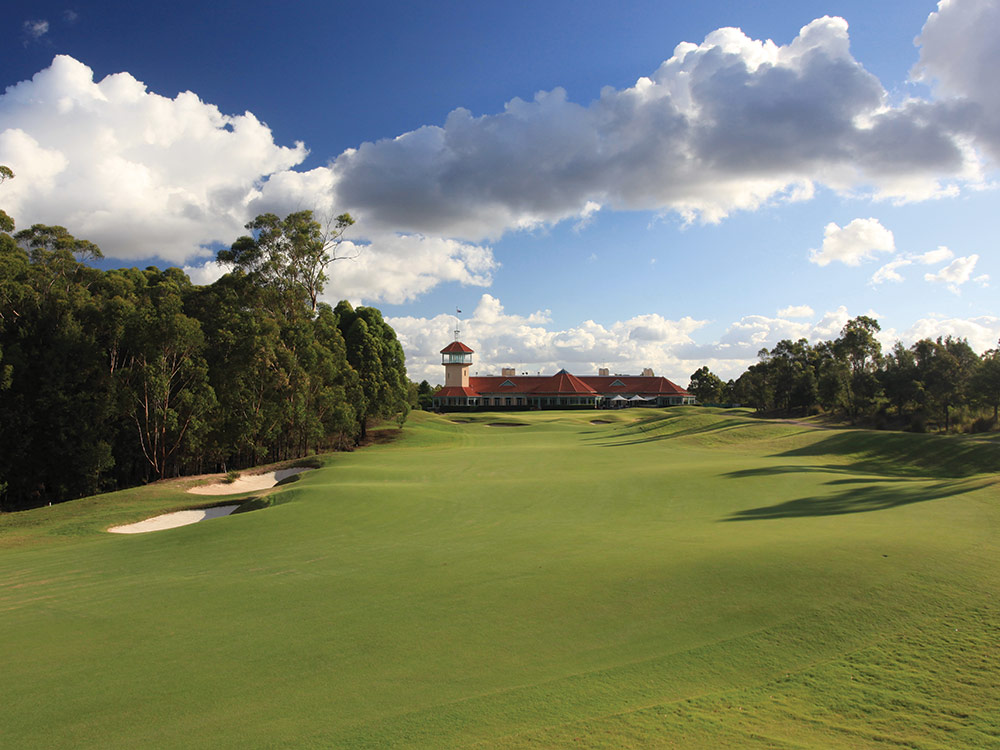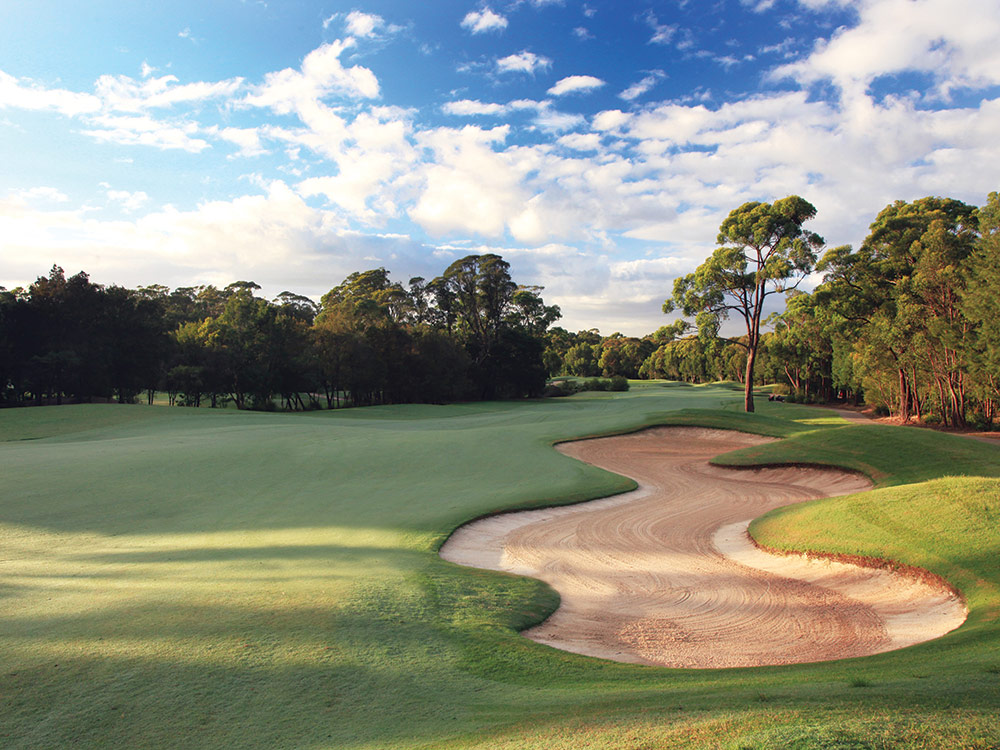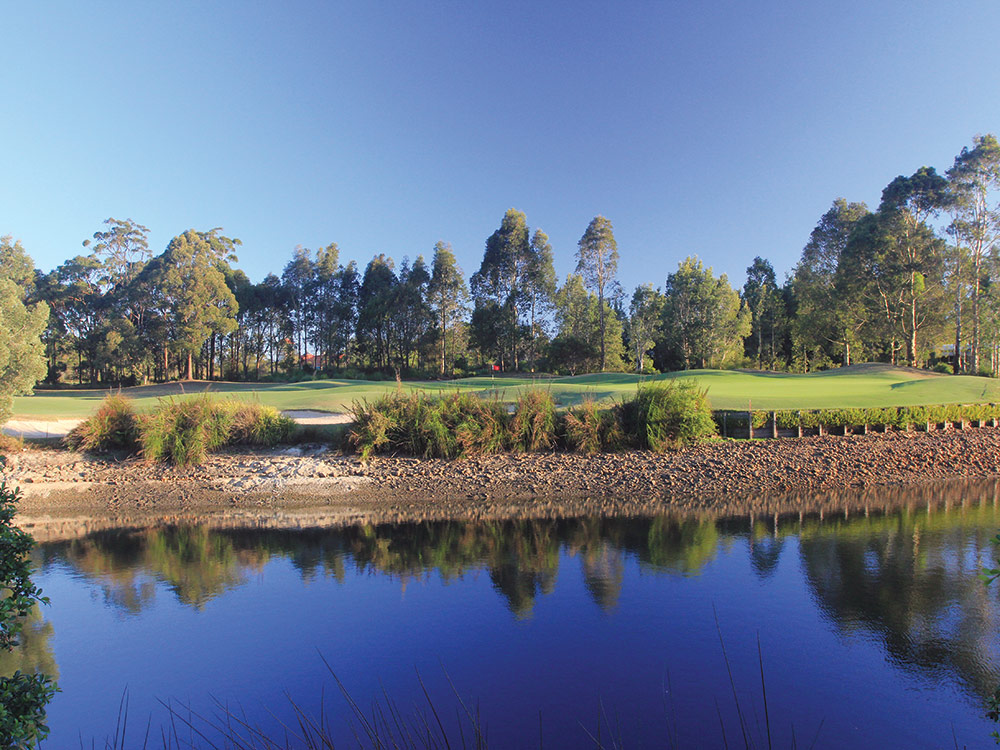Bush Sanctuary
FEW metropolitan golf courses provide a true escape from the hustle and bustle while keeping play within the city limits. In Australia’s largest city, nowhere does golf feel more secluded than at Terrey Hills Golf & Country Club on Sydney’s northern fringe.
Can it really be 23 years since the Graham Marsh/Ross Watson collaboration ended poor Wakehurst Golf Club’s unlikely two-decade reign as Sydney’s newest golf course? The much-discussed Terrey Hills course was eagerly awaited in the early 1990s as a new and exciting tournament venue, which is what it became soon after opening for play in 1994. The Canon Challenge gave touring pros their first look at the layout a year later, with the club hosting the now-defunct tournament regularly throughout the second half of that decade. It’s often forgotten, too, that the best female golfers in the land contested the 2003 Women’s Australian Open at Terrey Hills, with two Brits – eventual winner Mhairi McKay and Laura Davies – fighting out the title.

It’s a pity such an ideal championship venue hasn’t seen more action since, but pro golf’s loss is Terrey Hills members’ gain. The past few years have seen the club fortify its golf course, bringing the layout into the 21st century with modern length to stretch it within a pace of 6,500 metres from the back markers or 6,621 metres when five new ‘Tiger’ tees are in play at holes two, five, 10, 11 and 17. The club resurfaced all its greens and surrounds several winters ago, changing the putting surfaces from the original 1020 Series bentgrass to an A1/A4 blend and the surrounds to Santa Ana couch. Prior to that the greenside bunkers were reshaped and rebuilt, returning them to the original design by removing the turf faces and instead using the sandy faces to heighten the visual impact.
More recently has come a renovation of the fairway bunkers, while among the better changes was a complete upheaval of the seventh green complex. A surface long plagued by excessive shade over sunlight, No.7 was allowed to breathe again with the removal of a stand of trees behind the green. The surfaces flourished as a result and an extra viewpoint of the stately clubhouse from along the seventh fairway was the happy side effect.

Not that the course is short on views. Hugging the edge of Ku-ring-gai Chase National Park, playing Terrey Hills is literally a walk in the park. The stunning expanses of bushland are in view throughout and even though one hole borders a local school and others run beside a residential precinct, at no point are golfers left to feel anything other than in a world of their own.
The layout enjoys great balance. Its green complexes are familiar yet there’s an appropriate mix of bunkers, greenside water, humps, hollows and other pitfalls. The front nine is less open than the back but otherwise there is no sense of either side being longer, tougher or overtly different from the other. The best holes are also shared between the two halves.
One of the better ones begins proceedings. The 492-metre first is an opportunity to get your round off to a flying start, as the par 5 tumbles downhill to a green fronted by a creek that trickles into a lake left of the green. The roomy putting surface creates a sense of safety for any shot that carries the trouble, even if two-putting from long range is anything but a certainty.

The front nine closes with three holes that are strong for varying reasons. The aforementioned 390-metre seventh is an exercise in precision as both the drive and, in particular, the approach must be pinpoint accurate. The fairway falls slightly to the right as it moves downhill and any drive straying too far right will finish in the rough on a sideslope and with the non-preferred angle into the green. Conversely, bunkers down the left are there to catch drives veering too far in the other direction. The expanded green slopes steeply from back to front and missing left or right almost guarantees a bogey. The right side brings a deep bunker and a pond into play and while left appears to be the less penal direction to miss, any chip shot from below the green on that side is perilous.
The tee shot at the 349-metre eighth asks golfers to slot a drive long and over a series of bunkers that probe into the right side of the fairway or lay back with a long iron, leaving a mid-iron into a wide but shallow green with two distinct halves. The ninth is strong par 5 where there is ample space from the tee but the second shot must carry a fairway bunker to reach a downslope that will feed the ball towards the long green. That bunker atop the hill isn’t big but the terrain around it feeds balls inside it like a plughole swallows draining water.

Three more strong par 4s characterise the inward nine. The 10th rewards a strong draw (for right-handers) from the tee with a shorter, simpler second shot but water lurks along the left side of the hole from the driving zone until the green. Any par earned on this 389-metre monster is well earned. The next is an uphiller that extends to 435 metres from the rear-most tee. That starting point affords a better view of the hole ahead as some compensation for the added length. However the key to the 11th is in the second shot, which needs to be played with care depending on the location of the cup on the large green. There’s a pocket in the front-left corner of the putting surface that is tricky to get to thanks to the bunker short and left of the green, while water that’s not always visible beyond the surface can catch any shot flying past a back flag.
The hole every golfer most wants to conquer at Terrey Hills is the 17th. This bruising par 4 is a brilliant examination of shot-making prowess. A right-to-left shot that turns with the gentle undulations of the fairway is ideal from the tee as anything loitering too far right risks finding sand, being shut out by overhanging tree limbs or both. The second shot requires the reverse – a controlled left-to-right shot that’s hard to execute from the opposing right-to-left camber – and is a shot made more difficult by the unmistakable presence of a large pond butting up to the right edge of the green. The putting surface is another large green with ‘pockets’ for the best hole locations, especially in the front right and back right. So shots that find the green safely can still leave dire putts over and across multiple ridges. No wonder this is rated as the toughest hole on the course.
The 18th isn’t the most memorable hole at Terrey Hills but the approach shot is beautifully framed by the huge clubhouse and requires a smartly shaped, high iron shot depending on where the flag is located.
THE DETAILS
Terrey Hills Golf & Country Club
Where: 116 Booralie Rd, Terrey Hills NSW 2084
Phone: (02) 9450 0155
Web: www.terreyhillsgolf.com.au




